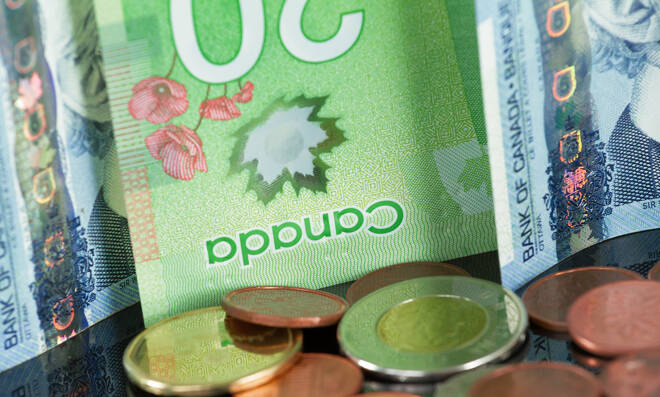Advertisement
Advertisement
USD/CAD: Loonie Slips to Over Two-Week Low After Bank of Canada Maintains Bond Buying
By:
The Canadian dollar weakened on Wednesday to its lowest level in over two weeks against its U.S. counterpart after the Bank of Canada held its key interest rates steady in a cautious attempt to boost the economy amid the fourth wave of the COVID-19 pandemic.
In this article:
The Canadian dollar weakened on Wednesday to its lowest level in over two weeks against its U.S. counterpart after the Bank of Canada held its key interest rates steady in a cautious attempt to boost the economy amid the fourth wave of the COVID-19 pandemic.
The USD/CAD pair rose to 1. 1.2761 today, up from Tuesday’s close of 1.2647. The Canadian dollar lost about 1% in July and has further dropped over 1.2% last month.
The Bank of Canada held its key interest rate on Wednesday, citing fears that the pandemic and supply bottlenecks might stall the economic recovery. The central bank has maintained its overnight rate target at 0.25% and said it will continue buying bonds at a rate of $2 billion a week as part of its quantitative easing program.
“Political uncertainty was one of the factors contributing to CAD’s underperformance lately and may well limit any ability of the loonie to stage a solid recovery if other factors improve. At the same time, we also note that CAD is trading quite cheaply according to our short-term fair value model, which shows a 2.1% overvaluation in USD/CAD. This mis-valuation appears quite overstretched as it falls above the 1.5 standard-deviation band,” noted James Knightley, Chief International Economist at ING.
“This suggests that most of the negatives are in the price and a dissipation in political risk combined with the Bank of Canada stepping in with more tapering in October may see some idiosyncratic CAD strength emerge.”
Meanwhile, the polls for the upcoming national election in two weeks have tightened dramatically, causing uncertainty regarding business and consumer forecasts.
The dollar index, which measures the value of the dollar against six foreign currencies, was trading 0.23% higher at 92.722. Having fallen to a near-one-month low last week, the greenback rose ahead of the European Central Bank meeting this week.
It is highly likely that the world’s dominant reserve currency, the USD, will rise by end of the year, largely due to the expectation of two rate hikes by the Fed in 2023. With the dollar strengthening and a possibility that the Federal Reserve will raise interest rates earlier than expected, the USD/CAD pair may experience a rise.
Canada is the world’s fourth-largest exporter of oil, which edge higher on low U.S. output, disruptions in Libyan ports. U.S. West Texas Intermediate (WTI) crude futures were trading 1.38% higher at $69.28 a barrel. Higher oil prices lead to higher U.S. dollar earnings for Canadian exporters, resulting in an increased value of the loonie.
On the other hand, Global demand for crude oils is declining due to recent restrictions over the Covid-19 Delta variant and a lack of buyers. The slowing Chinese economy dampened sentiment and have knocked investors off balance. As a major exporter of commodities, including oil, Canada’s dollar tends to be sensitive to the outlook for global economic growth.
About the Author
Vivek Kumarauthor
Vivek has over five years of experience in working for the financial market as a strategist and economist.
Did you find this article useful?
Latest news and analysis
Advertisement
